The following are Scott’s published writings in peer-reviewed journals, edited volumes, magazines, and graphic novels. If you need a copy of anything, happy to share.
Books
Cinema Medievalia: New Essays on the Reel Middle Ages
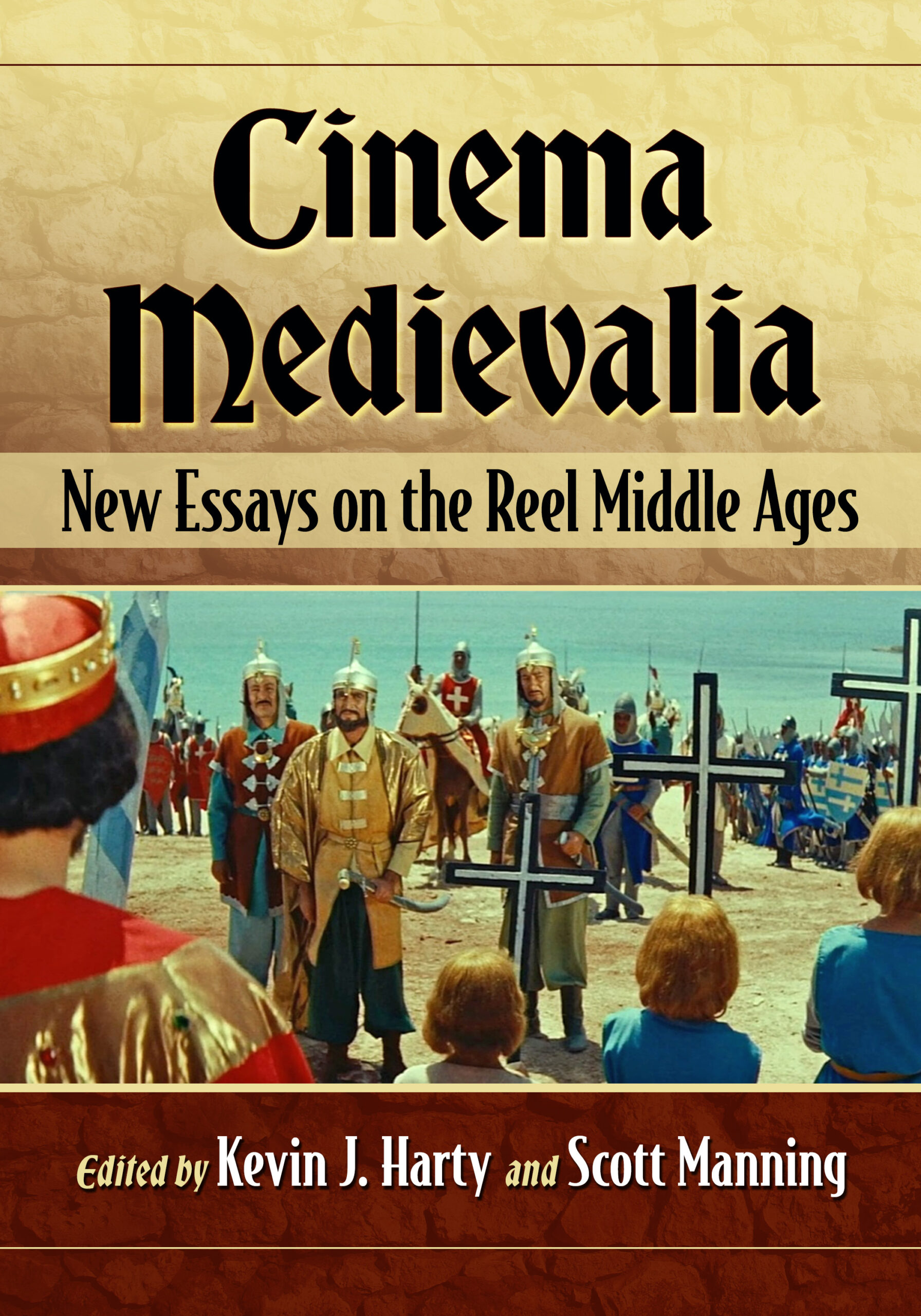
Co-edited with Kevin J. Harty. McFarland, 2024. Amazon
This collection of nineteen newly commissioned, original essays on medieval cinema is published coincidentally with the twenty-fifth anniversary of McFarland’s publication of Kevin J. Harty’s The Reel Middle Ages. The essays offer in-depth studies of nearly three dozen films, along with shorter discussions of other examples of cinema medievalia. Their authors hail from Australia, Canada, England, France, Iceland, Scotland, and the United States, and these authors bring to their essays a variety of backgrounds and approaches to the films that they discuss. Those films include silent films, animated films, films in black and white, films in technicolor—in all, the essays discuss a century of cinema depictions of the Middle Ages from the 1920s to 2021.
Joan of Arc: A Reference Guide to her Life and Works
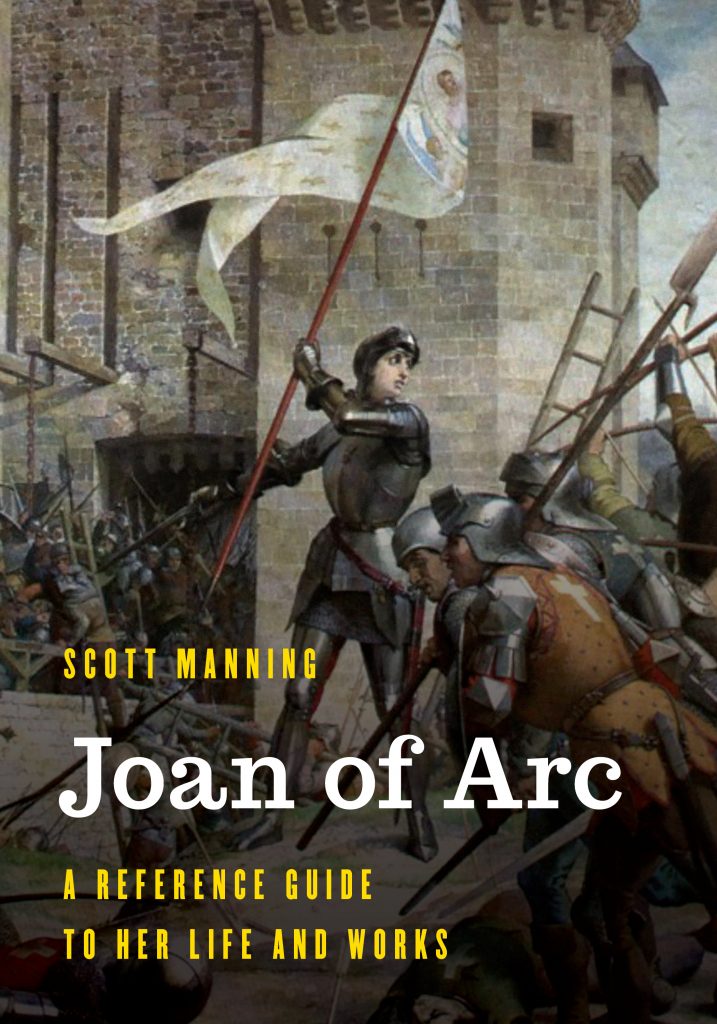
London: Rowman & Littlefield (now Bloomsbury), 2023. Amazon
Joan of Arc: A Reference Guide of Her Life and Works focuses on her life, and legacy. It features a chronology, an introduction offers a brief account of her life, a dictionary section lists entries on people, groups, places, events, topics, terms, and medieval documents central to Joan’s life including her letters, contemporary perspectives, her condemnation trial, and the nullification proceedings eventually blessed by the pope to overturn the verdict of the condemnation trial. This book aims to provide an understanding not just of Joan, but of the culture that produced and ultimately destroyed her.
Craig Taylor, The Medieval Review
“The crucial point is that Manning has written for those beginning their investigations into the history of Joan of Arc. His book is an extremely helpful resource for students and for those who are starting to read about Joan”
Gail Orgelfinger, author of Joan of Arc in the English Imagination, 1429-1829
“The first comprehensive compilation of people, places, and events associated with Joan of Arc’s life and culture in English.”
Library Journal
“Comprehensive and accessible to casual and serious readers alike.”
Choice Reviews
“Using this book, it will be easy for undergraduates to identify key resources to learn more on Joan of Arc and related topics. Recommended. Lower-division undergraduates through faculty.”
Forthcoming Essays
“Joan of Arc AI in Time Gate (1989): A Medieval Simulacrum in the Twenty-second Century,” Studies in Medievalism 35 (Forthcoming, 2026).
“The Culmination of Shakespearean Villainy in Transformers: The Movie (1986),” Mise-en-scène: The Journal of Film & Visual Narration (Accepted for Publication).
“Sharing Joan of Arc with Lifelong Learners at a Fortune 50 Tech Company,” Studies in Medieval and Renaissance Teaching (Accepted for Publication).
“Sans aventure: Knights with No Adventure Worth Recording in the Queste del saint Graal,” Arthuriana: The Journal of Arthurian Studies (Accepted for Publication).
“Joan of Arc on Screen,” Encyclopedia of the Global Middle Ages (Arc Humanities Press), Accepted for Publication.
Journal Essays, Chapters in Edited Volumes
“Arthurian Legend and the Death of Optimus Prime in Transformers: The Movie (1986)“

Studies in Medievalism XXXIV (2025): 192-212.
Marketing decisions by Hasbro that led to the decision to kill off Optimus Prime in the 1986 animated-film Transformers: The Movie. Challenged by the task, scriptwriter Ron Friedman employed Arthurian Legend to make the event more palpable for fans. This essay examines the production process, results, fan reactions, and the Arthurian parallels throughout the film, intentional or otherwise.
“Armored Warriors Full of Arrows: From Obscure Crusader and Arabic Texts to Marvel’s Wolverine“

Analyzing the Marvel Universe: Critical Essays on the Comics and Film Adaptations, ed. Douglas Brode, 38-49 (McFarland, 2024).
This is an updated and expanded version of an essay published in The Year’s Work in Medievalism 33 (2018). This essay examines medieval accounts of armored warriors likened to hedgehogs covered in arrows throughout the Crusades and how Wolverine has been the bridge for such a spectacle in popular culture, extracting the image out of obscure medieval chronicles and proliferating it through comic books, film, television, and beer commercials.
“3000 Miles to Rouen: Joan of Arc on Horseback.”
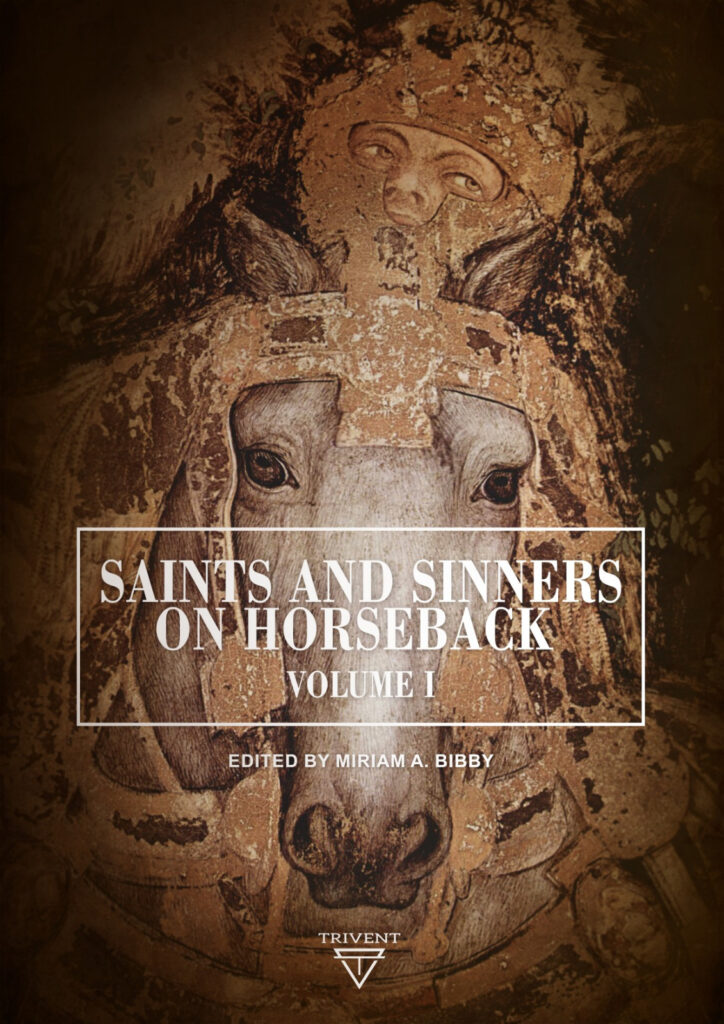
Saints and Sinners on Horseback, vol. 1, ed. Miriam A. Bibby, 257-283 (Trivent Publishing, 2023).
A heroic figure in statuary, movies, plays and books, it is little wonder that the character and life of Joan of Arc retain immense appeal today. Scott Manning takes a fresh look at the life of Joan as warrior and icon, examining the importance of horses and equestrianism in her story, and comparing this with visualisations of her over the centuries. Thus, a new facet of Joan is revealed, the young woman learning to ride and to fight, her close bonds with companions and horses, her vulnerability to injury, and her ability to acquire the skills that would sustain her on the road and in battle. Scott Manning shows how even her enemies could not deny her the superb equestrian expertise she displayed, and that this proficiency played no small part in her ultimate canonisation. Her story also reveals many important details about the use of horses in peace and war during her lifetime.
Review from Medievalists.net
The article goes on to detail the many depictions of Joan of Arc on horseback, starting with drawings in medieval manuscripts. During the 19th century it became fashionable for statues of Joan to feature her on horseback, and that image of Joan persists to today.
“Joan of Arc’s Gunpowder Artillery in Cecil B. DeMille’s Joan the Woman (1916)“

Film & History: An Interdisciplinary Journal 51.1 (2022): 18-31.
Only one Joan of Arc film—Cecil B. DeMille’s silent film Joan the Woman (1916)— depicts Joan providing any sort of direction to gunners. Given this anomaly in the cinematic tradition of Joan of Arc, this essay focuses on what influenced DeMille to depict gunpowder artillery as he did in the film. The inclusion of gunpowder artillery was a mid-production decision, and DeMille’s aesthetic mimicked what was readily available to him through Joan of Arc exhibitions and ephemera from the Ringling Bros. Circus, both of which distributed and even copied the works of Louis-Maurice Boutet de Monvel.
“Wonder Woman Revisited: Increasing the Drama with Classical Reception in New 52’s Justice League“
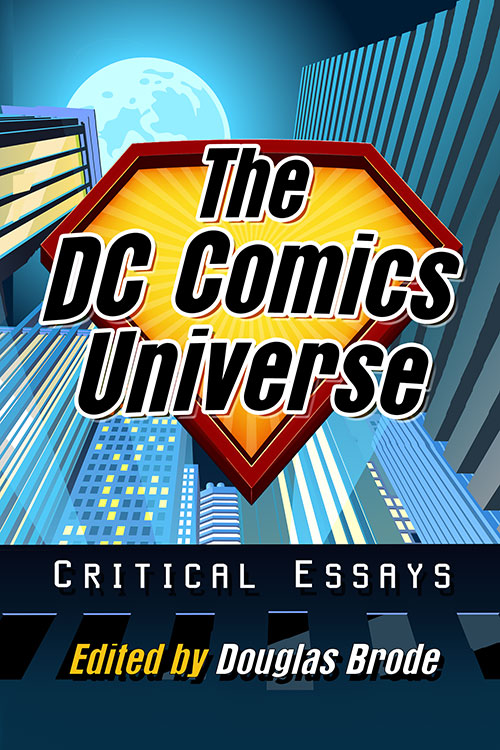
The DC Comics Universe: Critical Essays, ed. Douglas Brode, 214-224 (Jefferson: McFarland, 2022).
This chapter examines Geoff Johns’ method of incorporating the classics into his writing stint of DC Comics’ Justice League during the New 52 era (2011-2016). This form of classical reception is successful in exposing readers to Greek history and myth from such authors as Homer and Thucydides. In addition, Johns’ approach ensures that the reader understands they are encountering “real” history and myth, as opposed to the appropriated classical names and places that have been reconfigured for Wonder Woman’s larger meta-narrative since her first appearance in comics. This approach follows in the footsteps of classical historians, poets, and playwrights who often evoke history and myth to increase the drama of the moment and add legitimacy to their stories. In addition, it is an approach that Johns’ has since taken to the big screen with films such as Warner Bros.’ Aquaman (2018).
“Fit for Print, Not for Spectacle: Ringling Bros. and the Careful Exploitation of Joan of Arc”
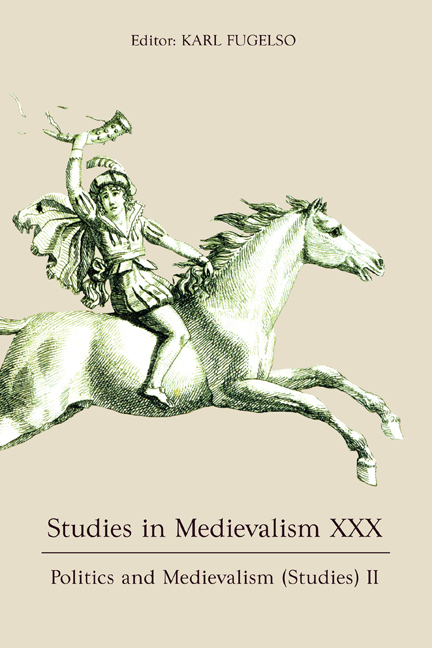
Studies in Medievalism XXX (2021): 229-252.
The Ringling Bros. circus was the biggest promoter of Joan of Arc’s story in American popular culture in 1912 and 1913. As this was right in the middle of the country’s infatuation with the Maid, between her beatification (1909) and her canonization (1920), it is worth understanding how they reached such an apex, as well as the story they told.
Scott Manning’s fascinating essay on the Ringling Bros. Circus’s spectacle about Joan of Arc’s life concludes the collection. The anachronistic spectacles, a mix of medieval, Renaissance, and Victorian medievalism, were intended to entertain with their lavish display of pomp and ceremony, as well as convey piety and patriotism to the early twentieth-century American audiences.
Marina Gerzić, University of Western Australia, Parergon 40.1 (2023)
“Channeling Joan of Arc in Doom: Annihilation (2019)“
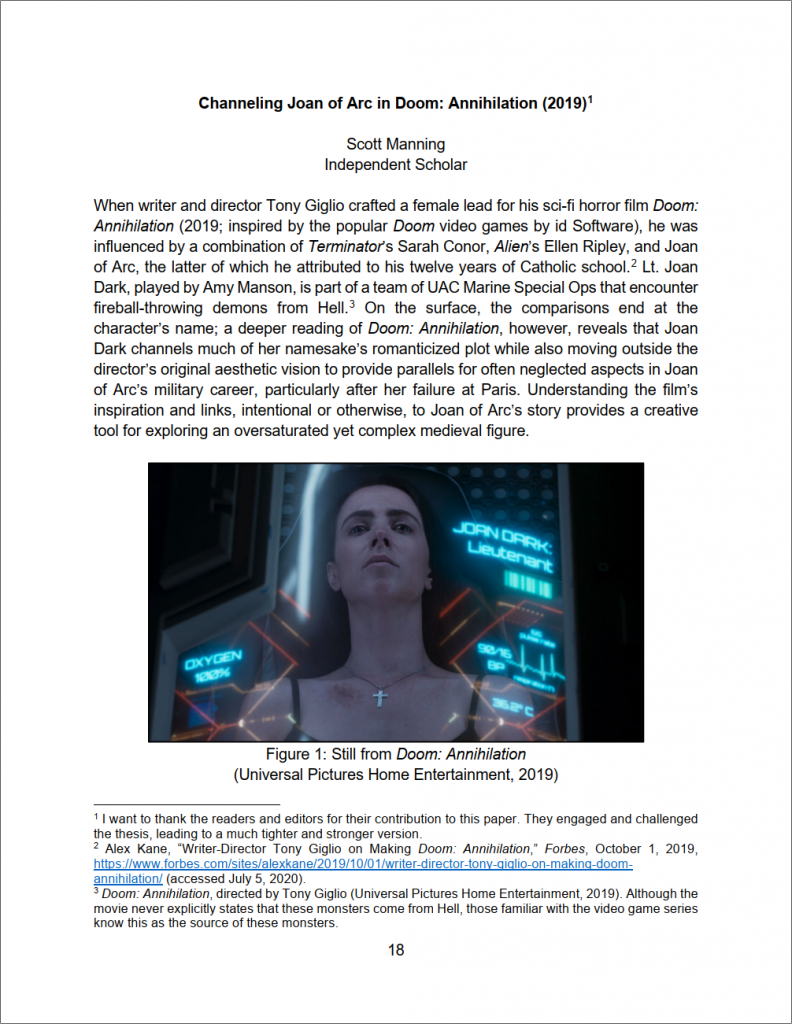
The Year’s Work in Medievalism 34 (2019): 18-31. (PDF, HTML)
When writer and director Tony Giglio crafted a female lead for his sci-fi horror film Doom: Annihilation (2019; inspired by the popular Doom video games by id Software), he was influenced by a combination of Terminator’s Sarah Connor, Alien’s Ellen Ripley, and Joan of Arc, the latter of which he attributed to his twelve years of Catholic school. Lt. Joan Dark, played by Amy Manson, is part of a team of UAC Marine Special Ops that encounter fireball-throwing demons from Hell. On the surface, the comparisons end at the character’s name; a deeper reading of Doom: Annihilation, however, reveals that Joan Dark channels much of her namesake’s romanticized plot while also moving outside the director’s original aesthetic vision to provide parallels for often neglected aspects in Joan of Arc’s military career, particularly after her failure at Paris. Understanding the film’s inspiration and links, intentional or otherwise, to Joan of Arc’s story provides a creative tool for exploring an oversaturated yet complex medieval figure.
“Warriors ‘Hedgehogged’ in Arrows: Crusaders, Samurai, and Wolverine in Medieval Chronicles and Popular Culture”
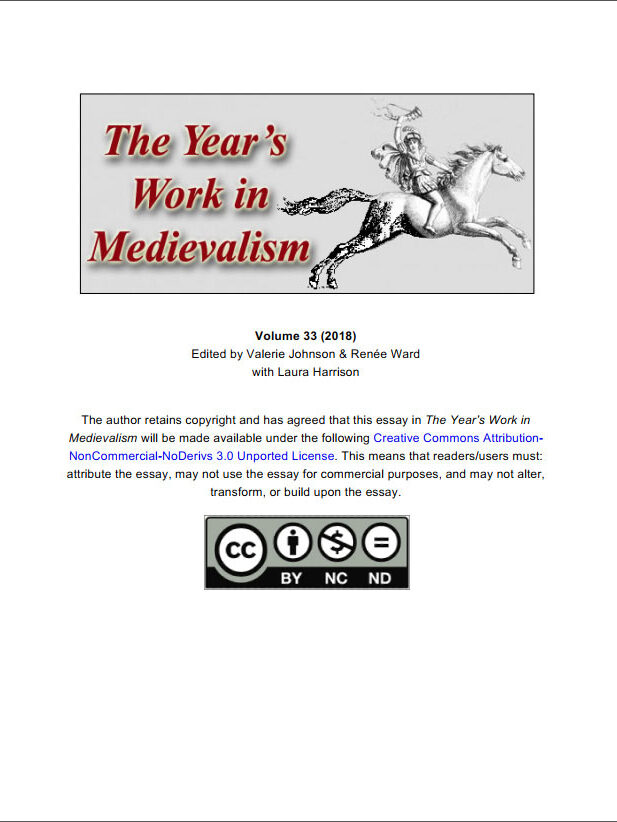
The Year’s Work in Medievalism 33 (2018): 62-77. (PDF)
For over four decades, comic book writers and filmmakers have found creative ways to torture Marvel Comics’ Wolverine. One method that has evolved since Frank Miller tackled the character in 1982 is filling his body with arrows. The mutant’s metallic skeleton coupled with his quick-healing superpower make him the ideal pincushion for these ancient projectiles in comic books and film. However, the image of a living human covered in arrows is medieval. Furthermore, the image of a living warrior covered in arrows is an image almost entirely relegated to Muslim and Christian chronicles of the Crusades, in which the writers typically associated the spectacle with a hedgehog. This essay examines medieval accounts of armored warriors likened to hedgehogs covered in arrows throughout the Crusades and how Wolverine has been the bridge for such a spectacle in popular culture, extracting it out of obscure medieval chronicles and proliferating it through comic books, film, television, and beer commercials.
“Historiography of Falkirk (1298) as the Predecessor to Infantry Dominance”

Saber and Scroll Journal 2, no. 3 (Summer 2013): 84-94.
For more than a century, historians have identified the Battle of Falkirk (1298) as a turning point in infantry tactics, not only for the Scots but also for warfare in the Western World. In his seminal work on military history, Hans Delbrück (1848-1929) wrote that Falkirk was unique, concluding “nowhere else in the Middle Ages do we find such great masses of foot soldiers who do not immediately break ranks when attacked by knights.” Delbrück was referring to the spearmen organized by Scottish Guardian William Wallace (d. 1305) in a battle that he lost against English King Edward I (r. 1272-1307). Delbrück is not alone in his assertion that Falkirk initiated, or at least preceded some revolutionary method for using foot soldiers, as the claim persists in numerous modern works. Remarkably, there was nothing new about the Scots’ tactics, but Falkirk remains popular in modern memory, predominately due to high profile participants such as Wallace and Edward, the former a national hero, as well as a dense library of contemporary and modern histories. In an attempt to neatly categorize transitions and trends in warfare, historians have erroneously identified Falkirk as the beginning of an era where infantry alone won battles, or at least stood up to cavalry, but in reality such infantry-centric achievements were occurring more than a century prior in the Western World.
Other Publications
“‘…Otherwise, You Will be Massacred’: The Battle of Jargeau”

Medieval Warfare 9, no. 2 (2019): 6-11.
This article examines Joan of Arc at the Battle of Jargeau (1429), focusing on the strategies and tactics of the English and French armies, as well as the reception and criticism by military historians.
The article features maps by Tina Ross and artwork by Marek Szyszko depicting Joan’s wounding at the battle, published here for the first time.
Afterword to A Flower in a Field of Lions: The Trials of Joan of Arc
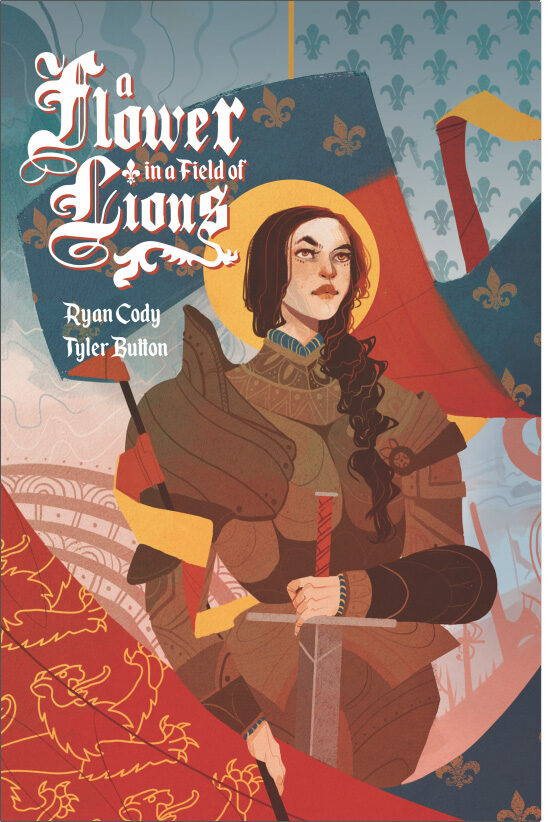
[Graphic Novel] (Phoenix: Tapestry Comics, 2018).
In 2018, Scott had the privilege of writing the afterword for Tapestry Comics’ graphic novel A Flower in a Field of Lions: The Story of Joan of Arc. The work was written by Tyler Button with art by Ryan Cody, depicting the story of Joan of Arc in some 140 pages.
The Afterward focuses on the artistic depictions, popularity, and difficulty of the story of Joan that artists, historians, and onlookers have grappled with for centuries.
“Churchill’s Efforts to Feed Germany after the Great War“

Finest Hour 145 (Winter 2009-10): 24-26. (pdf)
Churchill has been accused of ignoring pleas for food from Germany after World War I, most recently by Patrick J. Buchanan, who claims there is “no supporting evidence that Churchill ever made any sustained effort” to end the suffering. Well, here is the supporting evidence.
Published Books Reviews

Katherine J. Chen, Joan of Arc: A Novel (New York: Random House, 2022), Arthuriana 33.2 (2023): 180-182.
Gail Orgelfinger, Joan of Arc in the English Imagination, 1429-1829 (Penn State University Press, 2019), Philadelphia Inquirer, July 21, 2019, H2.
“The Case for Benjamin Rush,” review of Stephen Fried, Rush (Crown, 2018) and Harlow Giles Unger, Dr. Benjamin Rush (Da Capo, 2018), Philadelphia Inquirer, November 18, 2018, H2.
Paul B. Sturtevant, The Middle Ages in Popular Imagination: Memory, Film and Medievalism (I. B. Tauris, 2018), Philadelphia Inquirer, May 6, 2018, H2.
Jonathan Schneer, Ministers at War: Winston Churchill and his War Cabinet (Basic Books, 2014), The Journal of Military History 80.4 (October 2016): 1264-1266.
Anne Curry, Great Battles: Agincourt (Oxford University Press, 2015), Philadelphia Inquirer, November 15, 2015, H4.
Barry Strauss, The Death of Caesar (Simon & Schuster, 2015), Philadelphia Inquirer, March 15, 2015, H4.
“Retracing steps to the Great War,” review of The Sleepwalkers: How Europe Went to War in 1914, by Christopher Clark (HarperCollins, 2013), Philadelphia Inquirer, June 30, 2013, H9.
Richard F. Miller, In Words and Deeds: Battle Speeches in History (University Press of New England, 2008), On Point: The Journal of Army History 15.3 (Winter 2010), 61.
